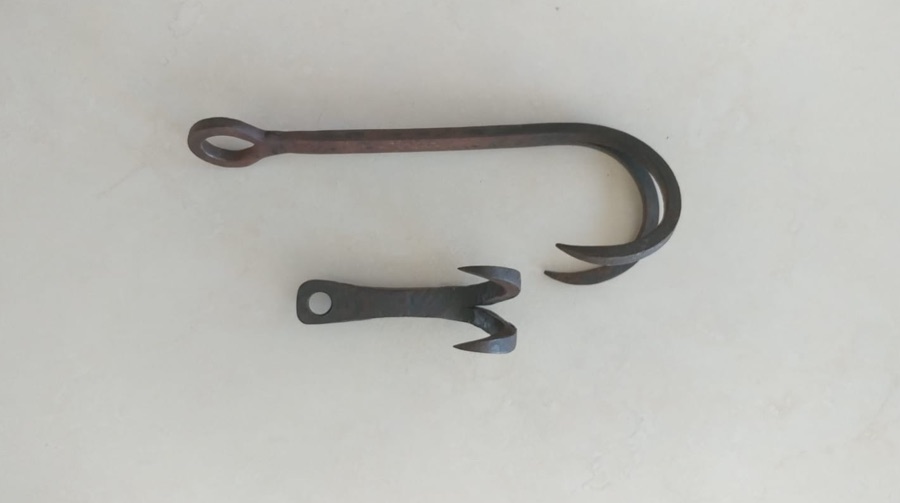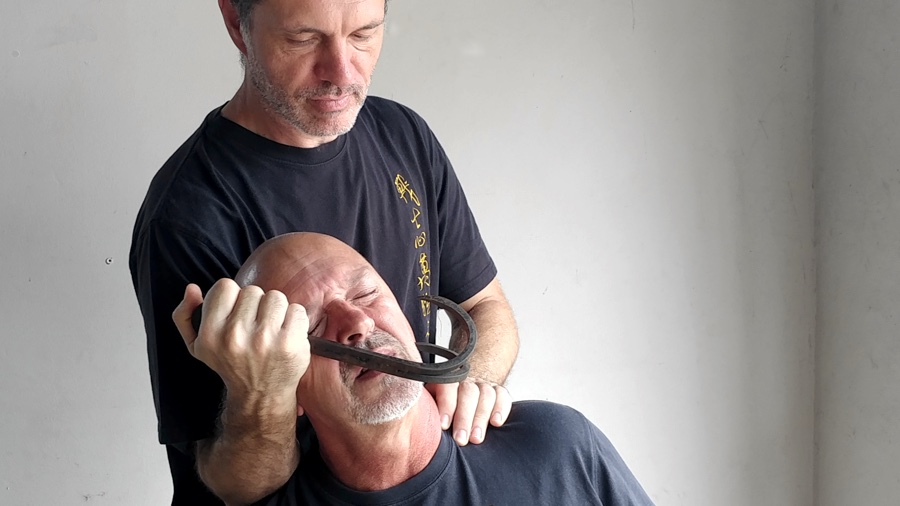
The single sided fēi zhuǎ 飛爪.
The Fēi Zhuǎ 飛爪 – Flying Claw
The fēi zhuǎ 飛爪, or ‘flying claw’, is seldom mentioned in detail today. Many people no longer understand its purpose or historical significance. This tool – both a weapon and a practical instrument – may appear simple, but its effective use is complex and demands rigorous training.
- 飛爪 fēi zhuǎ in Mandarin
- 飛爪 fei jow in Cantonese
(Literal translation: “Flying Claw”)
The fēi zhuǎ 飛爪 can aid the midnight thief 夜半偷 in scaling walls and trees. It also serves as a weapon, capable of tearing or ripping flesh, employing techniques based on the ‘rake’ principle found in Chinese combat systems.
As a military weapon, the fēi zhuǎ 飛爪 was designed to catch and pull horsemen from their mounts. A loose end of the rope would be secured to the ground, allowing the claw to ensnare the rider. As the horse advanced, the rider would be yanked from the saddle, often suffering a grievous injury upon falling. Once on the ground, the rider could be dealt with accordingly. In close-range combat, the claw is gripped in hand and used to rake at the opponent’s vulnerable areas.
The psychological impact of the fēi zhuǎ 飛爪 should not be underestimated. Its association with primal fears evokes a visceral reaction, and the mere thought of being raked by a rusty claw is a disturbing image for potential victims.
The size of the fēi zhuǎ 飛爪 varied according to the owner’s preference. Some were small, designed for thieves, while others were larger, resembling grappling hooks used by military forces.
The midnight thief 夜半偷 of the Warrior Heart 戦士心 tradition always carried a fēi zhuǎ 飛爪 concealed under the night clothing 夜行衣 jacket. Practitioners of other traditions also often carried the claw, as noted by Wan Laisheng 萬籟聲 in his book, The Quintessence of Chinese Martial Artistry 武術匯宗.

Pieter de Wet using the fēi zhuǎ 飛爪 in a close range response.
